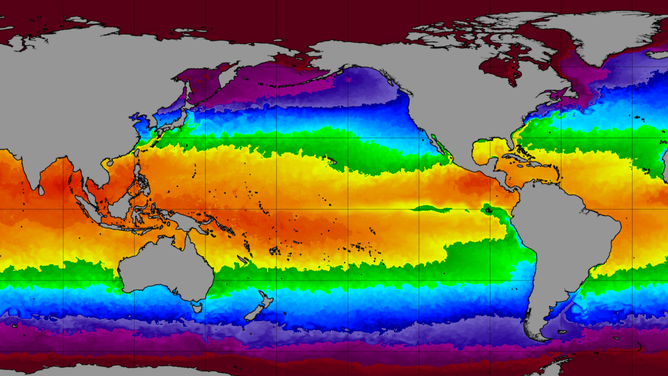The oscillation between El Nino and La Nina cycles holds immense implications, ranging from the ignition of wildfires and the formation of tropical cyclones to the onset of prolonged droughts.
The El Nino weather pattern, known for its disruptive impacts on global weather systems, is anticipated to taper off by June, according to statements from a U.S. government forecaster released on Thursday. However, concerns arise as the looming possibility of the La Nina phenomenon could take its place in the latter part of the year, as stated by the National Weather Service’s Climate Prediction Center (CPC) in its monthly forecast. The probability of La Nina’s emergence stands at 49% for the June to August period, escalating to 69% from July to September.
The significance of these weather phenomena cannot be overstated. The oscillation between El Nino and La Nina cycles holds immense implications, ranging from the ignition of wildfires and the formation of tropical cyclones to the onset of prolonged droughts.
Farmers worldwide, whose livelihoods hinge on predictable weather patterns, closely monitor these shifts. In Latin America particularly, the consequences are stark, with crops like wheat, soy, and corn bearing the brunt of erratic weather conditions, thus adversely impacting regional economies heavily reliant on agriculture.
The repercussions of El Nino and La Nina extend far beyond Latin America’s borders. Last year’s El Nino, characterized by hot and dry conditions in Asia, prompted India, a leading rice exporter, to curtail its exports due to a deficient monsoon.
Similarly, Australia, the world’s second-largest wheat exporter, experienced diminished wheat output. However, contrasting outcomes emerged in the Americas, where increased rainfall bolstered agricultural prospects in Argentina and the southern U.S. Plains.
Understanding the broader context is crucial. The complete cycle encompassing El Nino, La Nina, and a neutral phase typically spans between two to seven years.
As experts caution, the swift transition to La Nina this time around could catch Latin American nations off guard, leaving both populations and crops with scant time to recuperate. Notably, Australia’s weather bureau announced last month the conclusion of the El Nino event, marking a transition in the prevailing weather patterns.
The potential ramifications of La Nina’s onset are sobering. Sabrin Chowdhury, head of commodities at BMI, underscores the anticipated impacts on agricultural production, emphasizing its potential to affect wheat and corn production in the U.S. and a range of crops including soybean, barley, wheat, and corn across Latin America, notably in Brazil, Argentina, and Uruguay.
Moreover, La Nina’s association with protracted droughts in the Americas raises concerns about crop quality and yield, exacerbating global supply challenges.
In conclusion, the shifting dynamics of El Nino and La Nina weather patterns present a complex tapestry of challenges for global agriculture and economies. While the imminent decline of El Nino offers temporary respite, the looming specter of La Nina underscores the need for proactive measures and heightened vigilance among stakeholders.
As nations brace themselves for potential disruptions, the resilience of agricultural systems and the adaptability of communities will be tested in navigating the uncertainties of nature’s cyclical rhythms.
